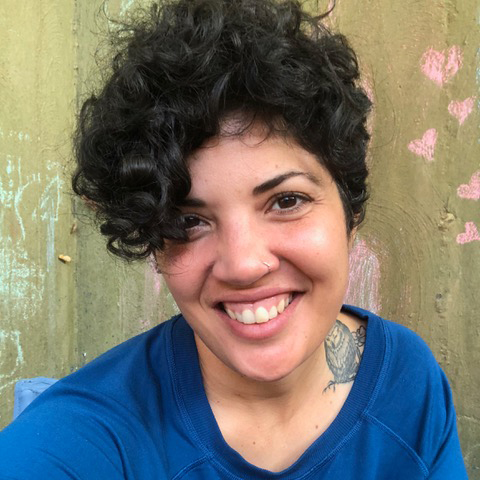
Shawna Ayoub moves "beyond a book review" in not only recommending great books by diverse writers but highlighting a technique to apply to your own writing.
The Last White Man, by Mohsin Hamid
Mohsin Hamid is a British-Pakistani novelist in whose novel, The Last White Man, the protagonist wakes up to find his white skin has turned brown. Andres’ reaction to this change is to hide in his apartment for a week before he learns that other white people are also turning brown. His transition from light to dark-complected is fraught with tension; he is at first afraid of himself. As he leaves his apartment, he becomes aware of others’ wary responses to him. He feels tracked and trapped by his brownness, and he resents the reduction in his privilege.
As the novel progresses, Hamid introduces more characters in various stages of the change. Andres’ girlfriend stays white for much of the novel, changing only toward the end as she begins to yearn for the shift. Her mother is militantly anti-brown, spouting pro-white politics until her daughter transitions and she utimately does as well. Andres’ boss and colleagues go through the change toward the middle of the novel, well after treating him with suspicion, marking him as an outsider. There are also brown people in this story that remain brown throughout, and with whom Andres tries to connect through his own thinking before finding he is unable to bridge the gap, their differences in brown experience too vast.
Ultimately, it is Andres’ father for whom this novel is titled. His father is clearly uncomfortable with Andres’ brown skin but loves him anyway. He takes Andres in, hiding him as society falls apart and race riots begin. Andres and his father care for each other as his father’s terminal illness progresses and claims him. This story could have ended there, but instead, we see Andres and his girlfriend move into his father’s home and begin renovation, making it over to match their new lives in a newly brown world.
The story is hopeful, but what it offers is beyond the stirring of hope for radical racial acceptance; it suggests that the privileged white community can come to understand the outsider experiences of the non-white majority. While it isn’t likely to happen through a sudden shift in skin color, it can happen by non-brown individuals reading this book.
Aside from offering perspective on identity, The Last White Man presents a compelling read through an artful literary choice by Hamid: to write each paragraph as a single sentence. This is a facet of the novel I didn’t notice at first. I found the writing lyrical and fluid. I was easily pulled from moment to moment and only realized the single-sentence paragraph structure when I was around 10% of the way into the book. Hamid’s choice propels the narrative forward, giving the story a kind of rushed feeling that is in keeping with the escalating chaos of the world outside Andres’ apartment. Looking at them individually, each paragraph feels lovingly attended to, elevating the prose in a way that offset (and thereby highlighted) the mundanity of Andres’ experience.
A writing exercise
I was very interested in this choice of paragraphs consisting of single sentences. They are not short. Each paragraph runs at least five lines. Instead of periods, other punctuation is used to connect statements and maintain flow. I think this is an excellent exercise for any writer to try.
So, tell a story by writing three or more paragraphs that are each one sentence long, with the goal of finding creative ways to continue a sentence instead of breaking it. This exercise will give us a greater understanding of how we normally use sentences as well as new ways we can utilize them in our writing to set a pace for the delivery of information.
If you want to read this novel for yourself, consider purchasing The Last White Man at Bookshop.org and supporting independent bookstores across the U.S.
Related reading
Beyond a Book Review: Alternate futures in Womb City
Beyond a Book Review: Beginning at the End in Tomb Sweeping
Beyond a Book Review: The “What if?” of The Deep Sky
Beyond a Book Review: Grief and Hope in All We Are Told Not to Touch
Beyond a Book Review: Once Upon a Time in Dovelion
Beyond a Book Review: Narrators and Compassion in Finding La Negrita
Beyond a Book Review: Research as Connection in Through the Banks of the Red Cedar
Beyond a Book Review: Intuition in River Woman, River Demon
Beyond a Book Review: Timeline(s) in Becoming AppalAsian
Beyond a Book Review: Unwieldy Creatures and retelling our stories
Beyond a Book Review: Containers as safe spaces in Nonwhite and Woman
Beyond a Book Review: Footnotes in Belly to the Brutal
Want to receive prompts, tips, and inspiration like this in your inbox every Sunday morning? Join our email list community! You will receive weekly advice, a year’s worth of weekly writing prompts as a FREE download, and be eligible to participate in our monthly photo prompt contest for a chance to share an original piece of writing with our community of more than 2,500 writers.
